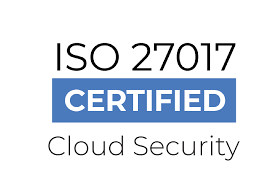NIST SP 500 - 316 FRAMEWORK

What is NIST SP 500-316 Framework?
The NIST SP 500-316 Framework, officially titled “Framework for Cloud Usability“, is a document published by the National Institute of Standards and Technology (NIST) in 2015. It aims to help organizations evaluate and improve the usability of cloud computing services.
Benefits of NIST SP 500-316 Framework?
- Improved User Adoption and Satisfaction: By addressing usability issues, cloud services become easier to learn and use, leading to higher user adoption and satisfaction.
- Reduced Training Costs: User-friendly interfaces require less training, saving time and money for both CSPs and CSCs.
- Increased Productivity: Users can be more productive with cloud services that are easy to use and navigate.
- Enhanced Security: Good usability can lead to improved security practices by users, as they are less likely to make mistakes due to confusing interfaces.


Benefits of NIST SP 500-316 Framework?
- Improved User Adoption and Satisfaction: By addressing usability issues, cloud services become easier to learn and use, leading to higher user adoption and satisfaction.
- Reduced Training Costs: User-friendly interfaces require less training, saving time and money for both CSPs and CSCs.
- Increased Productivity: Users can be more productive with cloud services that are easy to use and navigate.
- Enhanced Security: Good usability can lead to improved security practices by users, as they are less likely to make mistakes due to confusing interfaces.
Our Approach
1. Defining Scope and Goals:
- Identifying the cloud service(s) to be evaluated.
- Specifying the target user groups and their context of use.
- Defining clear goals for the evaluation, such as identifying specific usability issues or measuring user satisfaction.
2. Selecting Evaluation Methods:
- Choosing appropriate methods based on your goals and resources, such as:
- Heuristic evaluation: Analyzing the user interface for potential usability problems.
- User testing: Observing real users interacting with the cloud service.
- Surveys: Gathering user feedback through questionnaires or interviews.
- Combining different methods for a more comprehensive assessment.
3. Applying Usability Principles:
- Evaluating the cloud service against the six core usability principles:
- Effective: Does it achieve its intended functionality?
- Efficient: Can users complete tasks quickly and easily?
- Engaging: Is it enjoyable and motivating to use?
- Learnable: Can users easily understand and remember how to use it?
- Reliable: Does it perform consistently and without errors?
- Satisfying: Does it meet user expectations and leave them feeling positive?
4. Analyze and Report Findings:
- Documenting the results of evaluation, including:
- Identified usability issues.
- User feedback and suggestions.
- Recommendations for improvement.
- Presenting findings in a clear and concise manner to relevant stakeholders.
5. Iterating and Improving:
- Using the evaluation results to guide improvements to the cloud service.
- Re-evaluating the service after making changes to measure the impact.
- Making usability evaluation an ongoing process to ensure continuous improvement.








